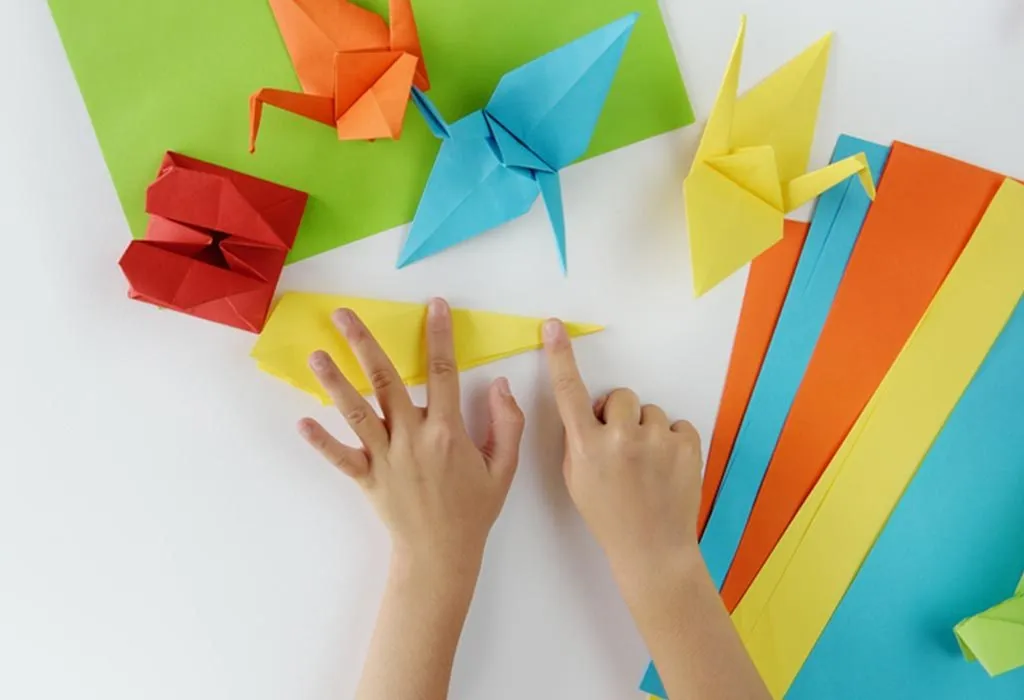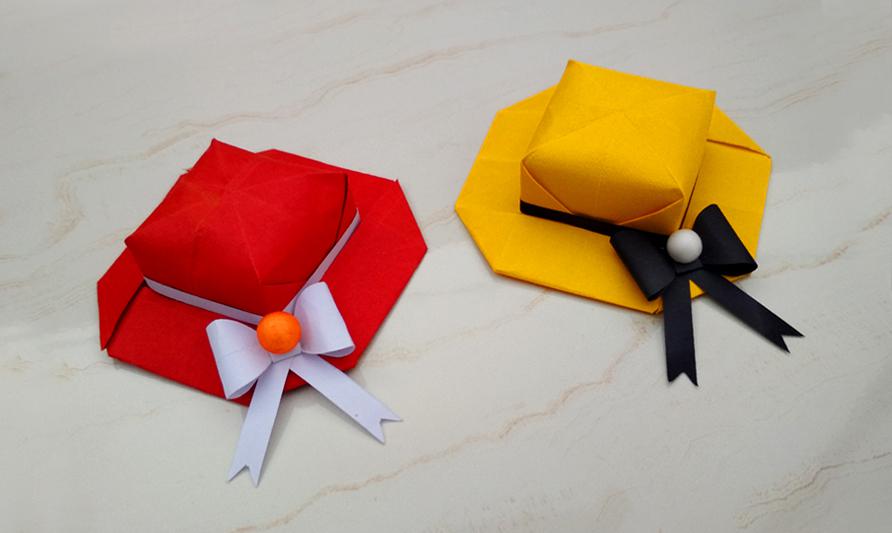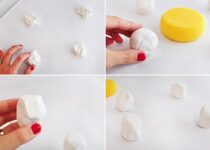Substitutes For Origami Paper
Making origami models is an immense amount of amusement and has been practiced for a long time. But what happens if you don’t own any origami paper? Don’t worry. We’ve found various alternatives for origami papers that have amazing results. here we will discuss all about different types of Substitutes For Origami Paper that can be used for making lovely craft work by kids and art enthusiasts.
A good origami-style paper should be light and easy to fold, bend, and exhibit structural integrity. Different origami paper options in cost, aesthetic qualities and price.
What is Origami?
The art of origami is one of the Japanese art of folding paper. In the modern era the term “origami” is often used as an umbrella term to describe all forms of folding regardless of the culture of origin. The purpose is transforming a square piece of paper into a completed sculpture using the folding and sculpting methods. Modern origami enthusiasts generally do not recommend cutting or glue marks in the papers.

What Are Its Alternatives?
Here’s the list of Substitutes For Origami Paper:
Kraft Paper
If you like an authentic look or simply would like to try something new, the art, you can utilize Kraft Paper, which is available in large quantities for the most affordable price. Kraft paper is slightly thicker than copy paper; however, it is nonetheless very easy to fold, and in the same way, it is structurally strong.
This option is affordable when you want to increase your origami skills and can create a distinctive cottage-style appearance that is not matched by other origami papers.
Gift Wrapping Paper
Gift wrapping paper with foil on one end and a graphic design on the reverse is an appealing origami paper alternative. Certain models are complicated, and the contrast surfaces of wrapping papers for gifts will help you follow the directions. Be aware of the difference in weight and texture of different wrapping paper. It can be distracting if the paper is coated with a high sheen, which makes it difficult to fold, or the texture makes folding difficult following multiple layers.

Junk Mail Flyer
Instead of throwing out those annoying junk mail flyers, consider folding them into origami. Certain models are not a great choice for this paper since it is generally more rigid and thicker than origami papers. But it is possible to create basic models such as the jumping frog, a heart, or even a boat with the flyer. You’ll need some pressure to cause the flyer to fold or bend into place.
Book Pages
Make your origami model and add a literary twist with an old book page repurposed from your favorite novel. Explore flea markets or thrift stores to find old books. There are many places to find books. You may need to cut the pages into squares before folding them into an origami design; however, the results are amazing. When the material is not brittle, the paper is sufficient to fold, fold, and bend without breaking. In addition, you can amuse yourself with text lines or images in the latest form of presentation.
Old Lottery Tickets
We all know that it is essential to keep your lottery tickets to ensure you’ve inspected them correctly and figured out whether you’ve won one of those huge jackpots. That means you could have some lottery tickets from the past stored somewhere. If you’re not an actual lottery winner, however, there is still something you can make use of the tickets, and this is origami. Tickets for the lottery are always bright and, therefore, perfect for origami. Check out the incredible model in this picture to discover what you can create with it.
Currency
Dollar bills and other paper currency can fold easily into various origami designs. The idea of money games or folding money in clever designs like elephants, bow ties, t-shirts and boxes is a well-known and distinctive art design nowadays. Most bills are elastic and strong enough to fold into semi-complex models because they are made of fabric and paper.
Newspaper
The newspapers are only used during the day and will be thrown in the garbage bin the following day. If you are an avid reader of the daily paper, why not keep the paper and make gorgeous origami?
Newspapers can also be a source of sentimental significance. If you create decorations for an event, like a wedding, you can utilize newspapers from an important date during the couple’s life to make your origami more unique.
Remember to keep in mind the fact that newspapers can be smaller than normal copy paper. If you plan to use newspaper, you should make smaller squares to ensure the origami can remain in shape. people also make use of newspaper to safely store air dry clay wraped in it for long term use.
Copy Paper
The most affordable alternative to origami papers is to use copied paper. Copy paper is light, durable, and comes in pastel, white and solid colors on either side. Creating simple origami models using copy paper is simple; however, as with a book, it doesn’t offer a striking visual contrast as Chiyogami or Washi paper.
Printer Paper/The A4 Paper
An essential item to keep in your crafting cupboard at school or home is the old-fashioned white A4 sheet of paper.
It’s inexpensive, simple to obtain, and perfect for practicing pieces. We prefer printer paper as it not just can be a cheap alternative to the specific origami paper but also offers youngsters the opportunity to embellish the paper using pencils or crayons before trying to fold their pieces.
Some crafters may claim that this paper is an unsuitable material for origami. However, it’s thin enough, holds its own value, and inexpensive enough for most crafters to attempt. Take some paper out of your printer and get folding!
What are Origami Techniques?
Different from Kirigami- the variant of origami that employs paper cutting, origami uses only the folding and creasing methods. A majority of origami projects utilize various combinations of these fundamental methods. This includes pleat folds, mountains fold, reverse folds, squash folds, sink folds, and petal folds.
MATERIALS
While origami can be done with any type of foldable paper, many prefer using specially designed ones. These types of paper are generally thinner than drawing paper and come with one printed or colored side and an uncolored side.
Styles
Like other art forms, it can be found in various styles. The most common are:
- Realistic: Designs that demonstrate the subject’s principal characteristics usually result in complicated designs that require numerous steps.
- Minimal: Creations that convey what is important about the topic matter with only a few folds, emphasizing simplicity.
- Modular: Multiple geometric “units” composed of several sheets of paper, whose pockets and flaps sew into one another to create polyhedra or polygons. Most papers are folded in the same manner or several different ways.
- Composite: Like modular origami, multiple pages are utilized, but in this type of design, the sheets are folded differently to show an entirely different aspect of the theme. The composite origami style has been one of the most common designs in both the 1950s and 1960s; however, it is very rare in the present.
- Practical: Models with practical applications such as boxes, envelopes, dishes, cups etc.
- Pureland: The Pureland concept was proposed by John Smith of England, who suggested the idea of a composed system that relies on square paper and “mountain” along with “valley” folds that resulted in easily duplicated models.
- Tessellations: The term “geometric folding” refers to a process in which the pattern is formed by the pattern formed by folding edges on the paper. Tessellations are typically regular (repeating) as well. They may be three-dimensional or flat; many have additional forms when exposed to light. It is not surprising that most of the top practitioners of this method have been mathematicians.
- Wet-folding: this technique developed by Akira Yoshizawa in which the paper is coated with a water-soluble adhesive (known as Sizing) and is slightly dampened before folding. The dampness allows the paper to fold into soft curves. These can then harden in toughness when the paper is dried.
- Crumpled: Technique developed by Paul Jackson and Vincent Floderer. It involves crumpling paper before folding it. This method can create very realistic organic shapes.
4 Simple Yet Beautiful Origami Paper Crafts For Children
Origami Boat
How to Make:
- Choose an origami rectangle to fold in half.
- Fold it in half to make a fold over the top.
- The two upper corners should be folded into the shape of a triangle.
- Fold both top layers of your paper inwards. This will make an origami cap.
- Then, bring your brim’s corner hat toward one another.
- Use the bottom corner, and unfold it upwards. Do the reverse and repeat for the second layer. You will end up with a triangle folded.
- Then pull the edge outwards and smooth the whole piece. It will create the shape of a square.
- Then take the top parts to create the shape of a boat.
Origami Hat
How to Make:
- Use a rectangular origami sheet to fold the top down. Fold the bottom edge, and fold it carefully.
- Then fold the two corners toward the center.
- Fold the top layer of the bottom layer upwards towards the base of each triangle.
- Fold the same layer time and fold the layers in a well-creased fashion.
- Flip the paper over and repeat the process with the second layer.
- Then, open it out to create the shape of a cap. to make it more beautiful looking you can paste some layers of acrylic yarn on your hat in different patterns with glue for unique origami craft work when compared to others.

Origami Fan
How to Make:
- Choose a 6-inch piece of shiny origami paper.
- Fold 1cm of the sheet from its white surface upwards.
- Fold and flip 1 cm of the paper once more. Be sure the edges are aligned on the bottom.
- Repetition the procedure until you’ve folded the paper in half.
- Turn on the fan to enjoy the cool air.
Origami Fortune Teller
How to Make:
- Use a 6-inch square origami sheet and fold it into a triangle.
- Then fold it in half again to form a smaller triangle. Once you have folded everything to the right, you will get a sheet of paper with an X-shaped crease.
- Turn each corner towards the middle of the rectangle. Then you will have a smaller square.
- Flip the paper over to fold it in half. Fold the edges towards the middle in the center of your square.
- Fold and unfold the bottom edge until at the top while bringing the top edge up to the right.
- Then add your names on the flaps that are outside. Note all the numbers and the fortunes inside the flaps.
Tip: you can also apply finely grinded glitter of different colors with glue on your fortune teller or other origami art work to make it look more magical and attractive for kids.
How thick should Origami paper Be?
The most traditional origami paper is made by hand and weighs between 20 to 50 grams. In the ideal scenario, any alternative to origami paper should be in the same thickness range for folding designs. The various origami kinds may differ in texture and thickness depending on the fiber they are made of and their nature, like washi and chiyogami.
How Heavy Should Substitute for Origami Paper Be?
Whatever paper you use as an alternative to origami material should be light and simple to fold. Be sure to keep in your mind Kami is a good origami paper that is suitable for beginners, and must weigh from 60 to 63 grams. The paper used for folding origami should be simple to bend into forms yet retain its shape when the model gets finished.
Frequently Asked Questions
Isn’t every origami paper almost identical?
No! In reality, the quality of origami papers is different. To determine the highest quality standard origami paper, search for paper produced in Japan by firms that have been making origami paper since the beginning.
How is origami paper referred to in Japanese?
Washi is the origami paper that is traditionally used in Japan. Washi is generally more durable than normal paper made of wood pulp and is utilized in various traditional arts.
What are origami papers different from regular paper?
Most origami papers are slightly heavier than newspapers. However, they are thinner than copier paper, and as you can see in the graph below, origami paper is generally thin and, thus, simple to work with.

Being associated with art and craft field since decades as a hobbyist and life long learner has given me an opportunity to learn many new things related to art, craft, paints and pottery which i am trying to share with your guys on this website. I have expertise of being professional painter and potter for the last 20+ years
I have learned mind blowing cool tips and insights which makes me a person with ability to improvise and come up with creative ideas and solutions to make stunning and impeccable art pieces of all types which are adored by people across the globe on this website and other platform.


